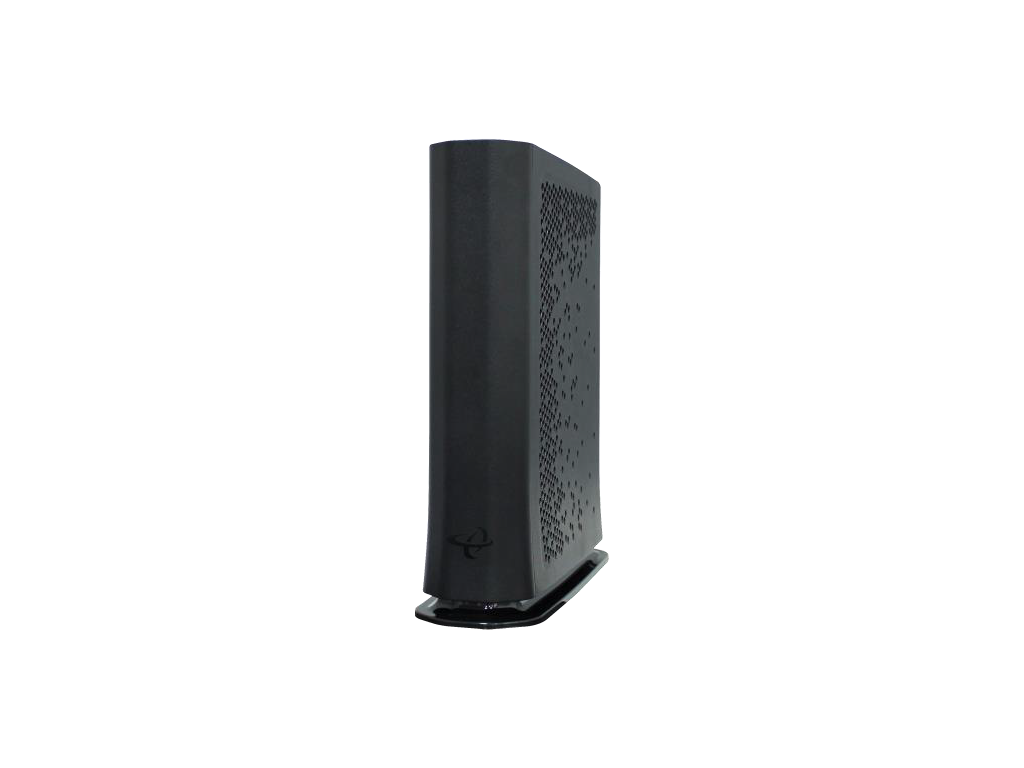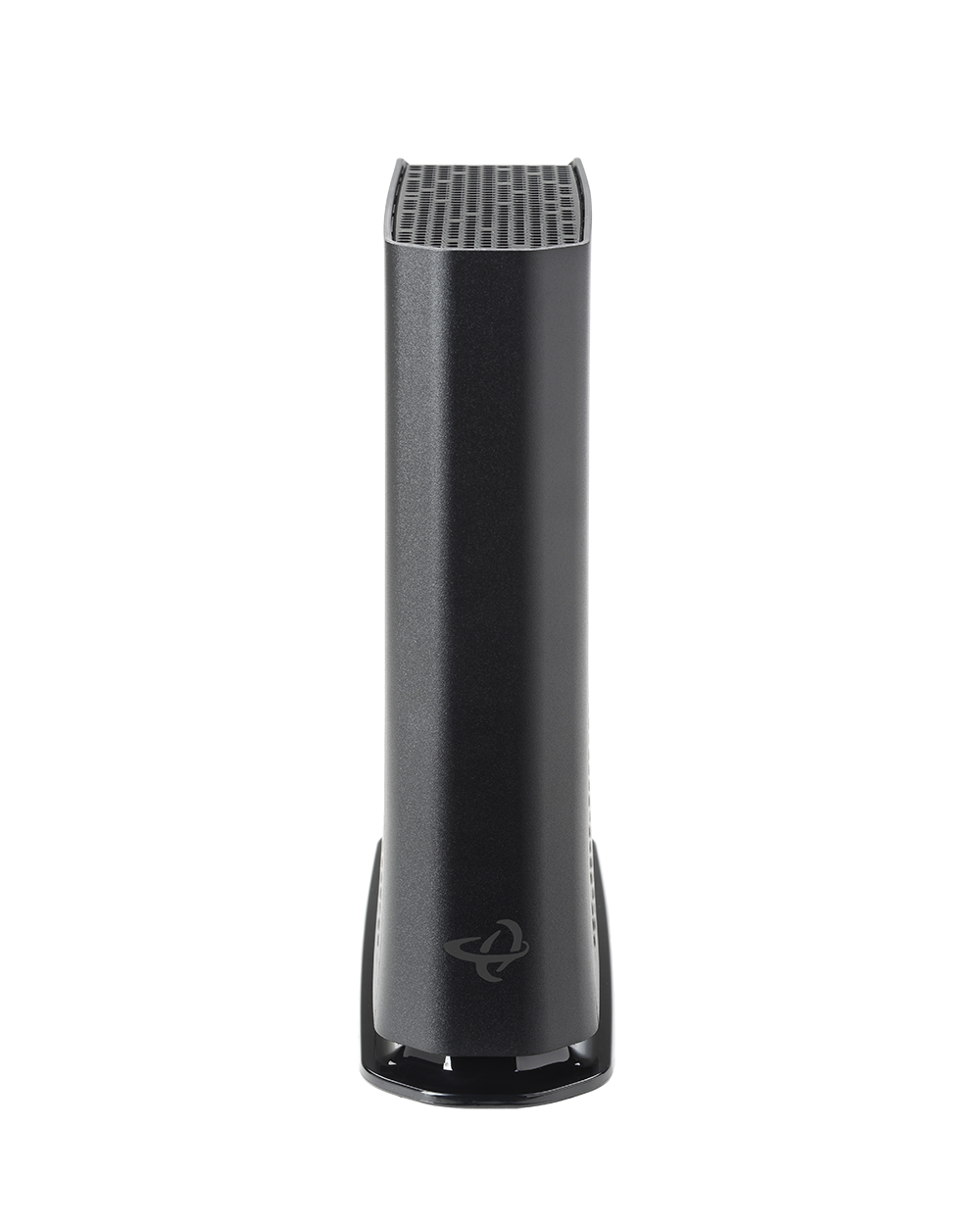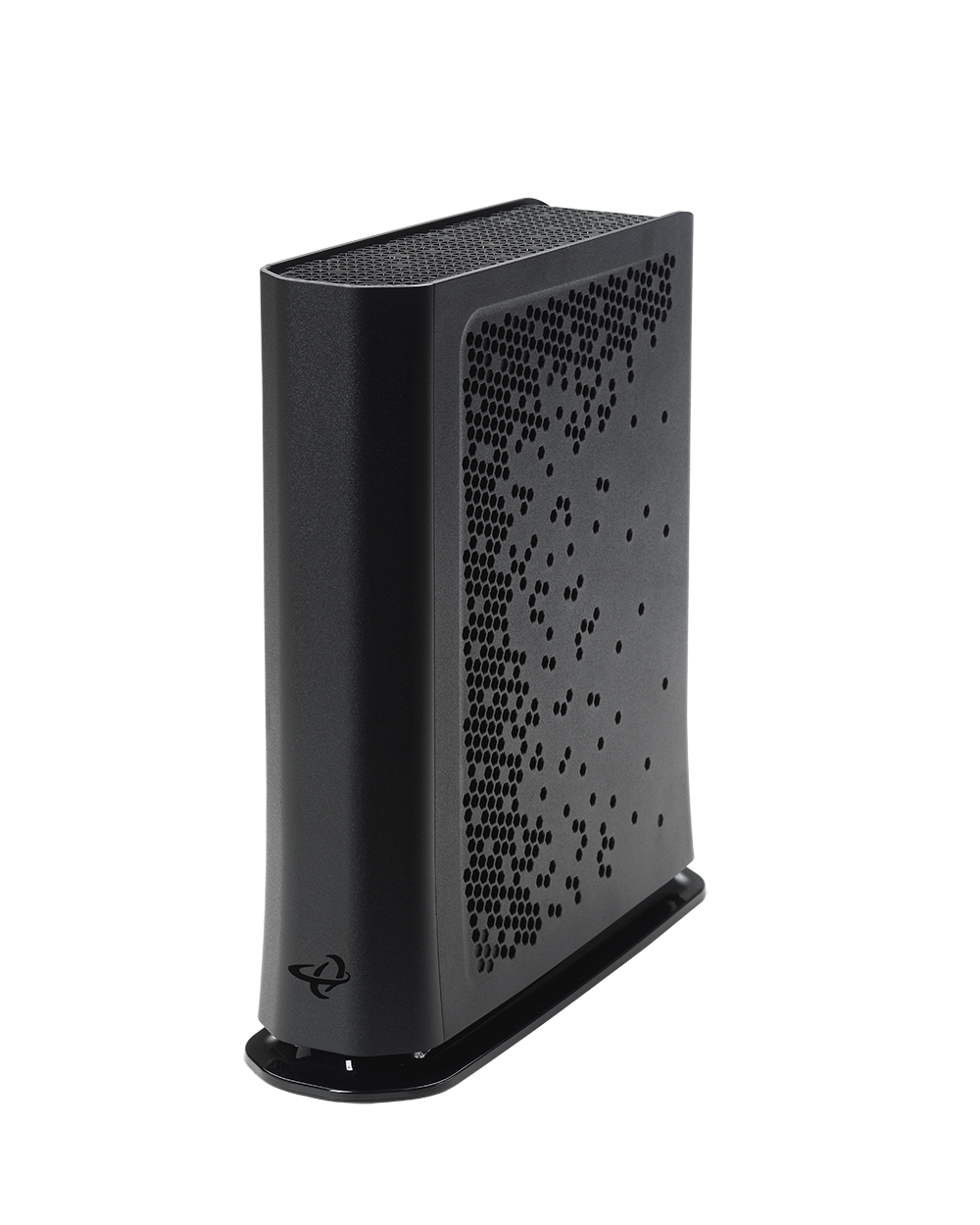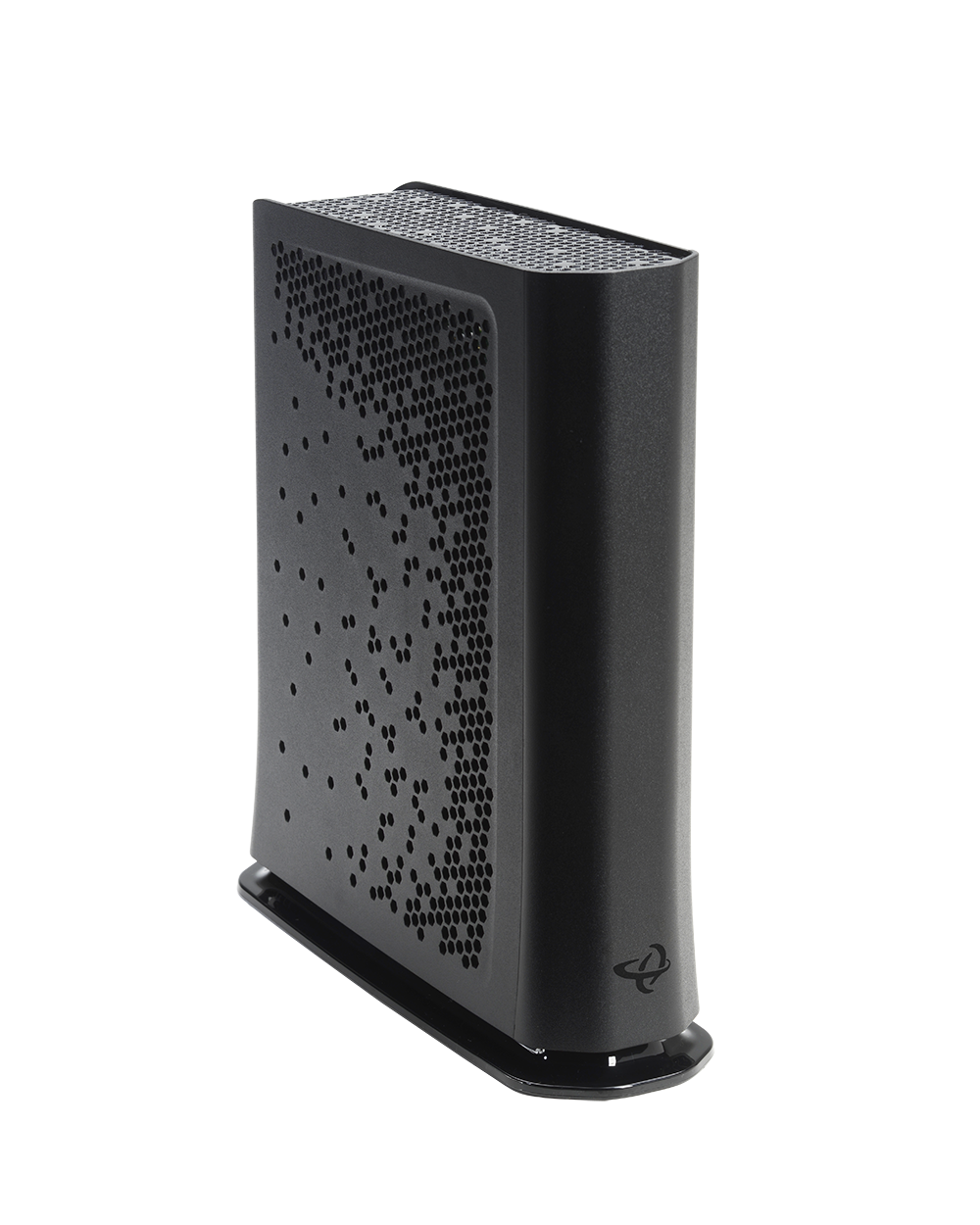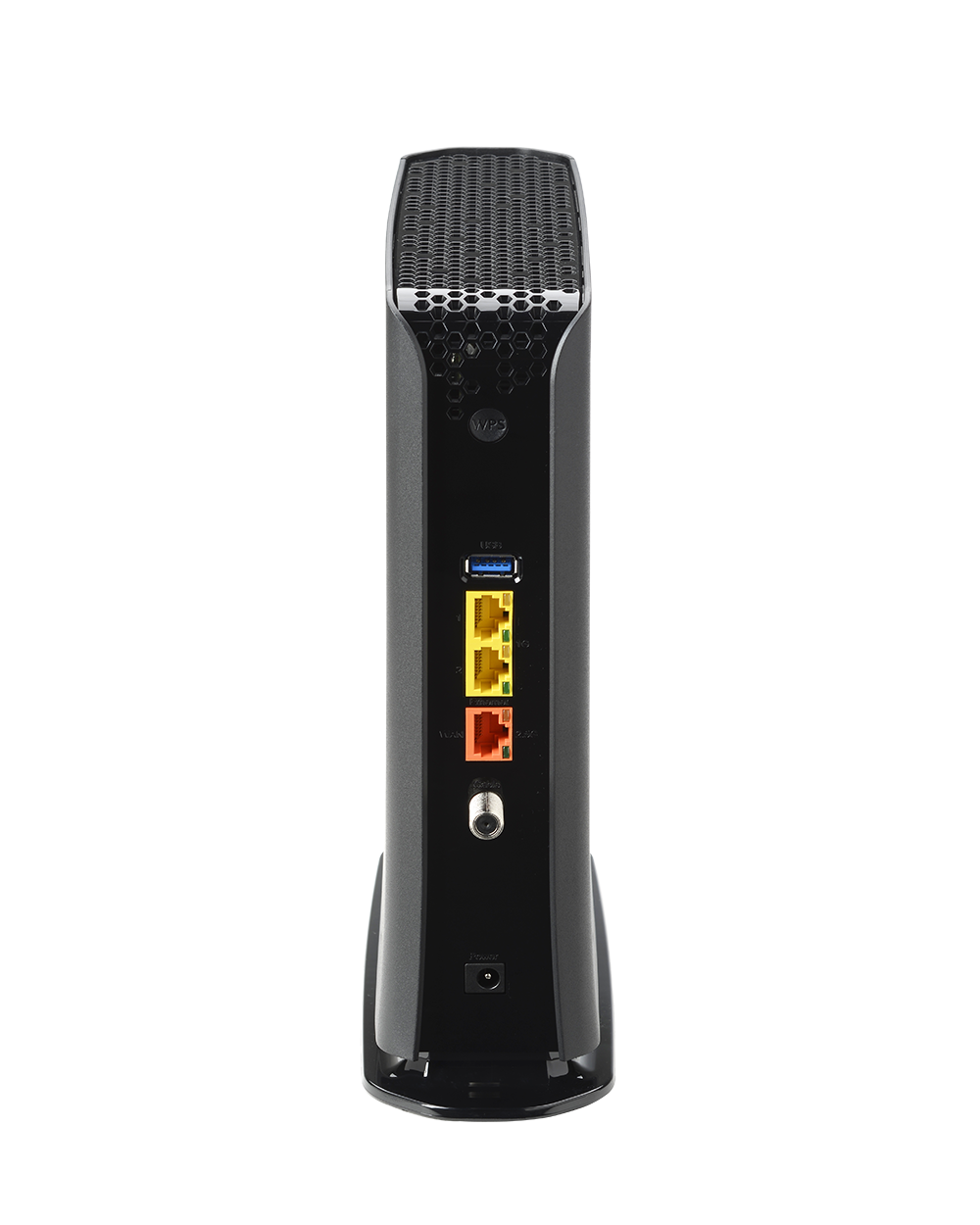Multi-Gig DOCSIS 3.1 Performance
With 2×2 OFDM/OFDMA and DOCSIS 3.0 32×8 bonding, the CODA-5712 delivers reliable multi-gigabit downstream capability while maintaining backward compatibility with DOCSIS 3.0 networks.
Switchable Upstream Frequency
Operators can toggle between 5–85 MHz and 5–204 MHz upstream paths, enabling smooth migration to high-split or future network architectures without swapping out hardware.
Robust Wi-Fi 6 Coverage
Dual-band Wi-Fi 6 with 4×4 5 GHz and 4×4 2.4 GHz radios delivers faster speeds, lower latency, and more efficient performance for multiple connected devices.
Built-in MoCA 2.0 Bonding
Turns existing coax wiring into a high-speed backbone—ideal for extending Wi-Fi coverage or providing stable wired connectivity in hard-to-reach areas.
Enhanced Wired Connectivity
Equipped with 1× 2.5 Gbps Ethernet port and 2× 1 Gbps ports for premium wired connections, plus a USB 3.0 port for media and NAS use cases.
Effortless Setup & Remote Management
Supports SNMP, TR-069, TR-369, HNAP, MyHitron+, and HitronCloud for simplified provisioning, diagnostics, and lifecycle management.
Benefits for Service Providers
- Comprehensive One-Box Solution: Combines DOCSIS 3.1, Wi-Fi 6, and MoCA into one device, reducing the need for multiple pieces of equipment.
- Future-Ready: Flexible upstream tuning ensures operators are prepared for evolving network upgrades.
- Hybrid Connectivity: MoCA delivers wired stability via coax while Wi-Fi 6 ensures high-capacity wireless coverage.
- Operational Efficiency: Streamlined deployments with remote management reduce support costs and truck rolls.
Key Specifications
- DOCSIS Support: DOCSIS 3.1 (2×2 OFDM/OFDMA) + DOCSIS 3.0 (32×8)
- Upstream Tuning: Switchable 5–85 MHz / 5–204 MHz
- Wi-Fi: Dual-band Wi-Fi 6 (4×4 5 GHz + 4×4 2.4 GHz)
- MoCA: Bonded MoCA 2.0 for high-speed coax-based wired uplinks
- Ethernet Ports: 1× 2.5 Gbps + 2× 1 Gbps
- USB Port: 1× USB 3.0
- Management: SNMP, TR-069, TR-369, HNAP, MyHitron+ app, HitronCloud
Documentation
Other Products to Consider
Product
Modem Type
Frequency
WiFi
Wired LAN
Voice
Learn More about Cable Modems & Routers
What’s the difference between a modem and a cable modem?
A modem and cable modem are different devices because of the services that they connect to. A DSL modem connects to landline or telephone lines (also referred to as Copper by Internet Service Providers). A cable modem connects to Cable TV wiring (coax or coaxial...
Cable Modem Routers: Band Steering Explained
In today’s world, smart devices and connected IoT devices are everywhere in every home. With all these devices connected on one network, it can get difficult to ensure a smooth online experience while streaming, gaming, and video-calling all under the same roof....
Cable Modem Channels Explained
Cable modems communicate directly with Internet service providers (ISP) to transmit data back and forth. This is also known as downstream and upstream channels of data and requires multiple channels for each to offer optimal performance. Here’s everything know about...
Can DOCSIS 3.1 Cable Modems Increase Speeds?
Fast Internet is often considered a household essential. So many everyday things require an Internet connection, from smart home technologies to computers and phones. Your cable modem plays an integral role in achieving the best possible Internet speeds since it’s...
Cable Modems Explained: Channel Bonding
Too much device traffic on one home Wi-Fi network leads to congestion which leads to slow Internet. That’s why modern cable modems have evolved to create more than one “lane” – or channel – to let that traffic through. This feature is called channel bonding. If you...
